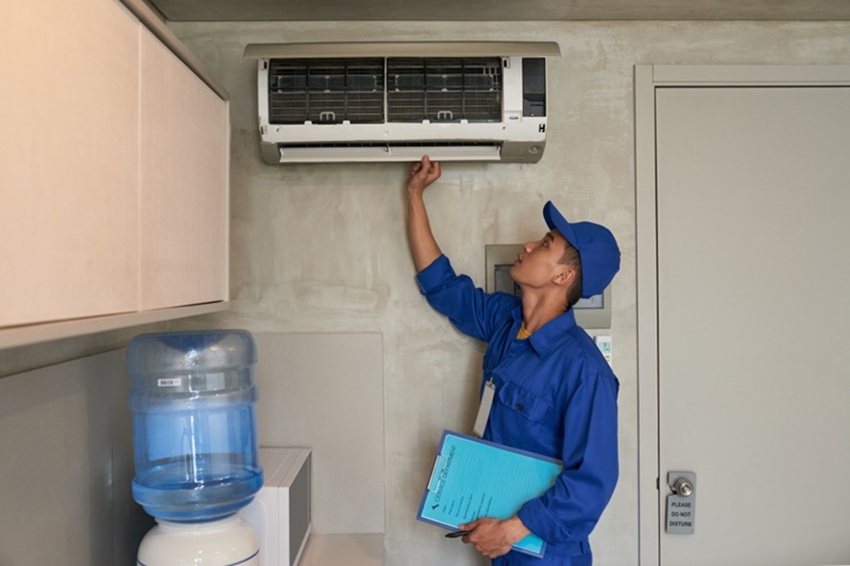Ever dreaded opening your electricity bill after a scorching Aussie summer? You’re not alone. While air conditioning is a must-have in many parts of Australia, it doesn’t have to drain your bank account. Whether you live in a small apartment or a large home, smart, energy-efficient choices can keep you cool without a high power bill.
What Energy Ratings Really Mean?
When buying an air conditioner, pay close attention to the energy rating label. More stars = better energy efficiency. These ratings follow the Zoned Energy Rating Label (ZERL) system, which considers Australia’s different climates—tropical, temperate, and cool.
Choose a unit suited to your region for the best performance. If you only use AC occasionally, a mid-range model might do the job. But if you run it daily, especially in hot areas, a high-star unit could save you hundreds in the long run.
Budget-Friendly, Efficient Cooling Options
You don’t need to spend big to stay comfortable. Budget air conditioners, like compact split systems or window units, can cool small rooms efficiently if sized correctly.
Look for:
- Inverter technology: Saves energy by adjusting compressor speed.
- Quiet operation: Essential for bedrooms or home offices.
- Good reviews: Especially from users in similar climates.
Mid-Range Air Conditioners: Best Value for Performance
Mid-range air conditioning systems offer a great mix of cost and functionality. Ideal for medium-sized homes or multi-room cooling, these units often feature smart controls, air filtration, and improved energy efficiency compared to basic models.
Wondering about air conditioner placement in the living room? Mounting the unit high on a wall helps circulate air evenly. For open-plan spaces, central positioning is best to avoid hot or cold spots. In bedrooms, aim for airflow that doesn’t hit your bed directly for a more restful sleep.
If your floor plan is tight, go for compact split systems that can be wall-mounted in less intrusive areas. Ask your installer for advice on reducing noise while maximising coverage—placement is key to comfort and efficiency.
Premium Systems: High-End Comfort and Efficiency
Premium air conditioning systems come packed with features like zoned cooling, Wi-Fi connectivity, and multi-stage air filtration. These systems suit large or open-plan homes, providing optimal comfort with minimal energy waste.
High-end split systems are great for living rooms and master bedrooms, offering precise climate control and whisper-quiet operation. Some models even work with smart home assistants for voice or app control.
If you’re cooling an entire home, a multi-split or ducted system could be worth the higher upfront cost. They offer long-term savings through superior inverter technology and lower energy consumption.
Split vs Ducted Air Conditioning: What’s More Efficient?
Choosing between a split system and a ducted air conditioner depends on your home size, budget, and usage.
- Split systems are cost-effective for cooling individual rooms, with flexible installation—yes, even above windows in many cases.
- Ducted systems provide whole-home comfort and a clean look, with vents in ceilings or floors. They’re efficient for larger properties but can be wasteful if you only need to cool a few rooms.
For energy-conscious homes, split systems win for targeted cooling. But if you’re after consistent, zoned comfort throughout the house, a ducted solution may be the smarter long-term investment, provided it’s well-designed and professionally installed.
Easy Ways to Boost Your AC’s Energy Efficiency
Even the best air conditioner can waste energy if not maintained. Regular filter cleaning or replacement keeps airflow smooth and reduces strain on the system. A clogged filter forces your AC to work harder, raising your power bill.
Air conditioner placement also matters. Keep outdoor units shaded and away from direct sunlight to prevent overheating. Indoors, ensure there’s space for proper air circulation.
Lastly, set a sensible thermostat—around 24–26°C is ideal. Lower settings don’t always mean faster cooling, just more energy use. A small adjustment can make a big difference to your electricity bill.
Government Rebates for Energy-Efficient ACs
Across Australia, government rebates and incentives help lower the cost of installing energy-efficient systems. Some state programs offer cashback or bill credits for approved air conditioner installations.
To qualify, you may need to:
- Use accredited installers
- Buy systems with high energy ratings
- Submit receipts or proof of installation
You can also take advantage of free energy audits to find other ways to reduce energy costs. Always check local schemes before purchasing—these programs can save you hundreds of dollars.
Long-Term Savings: Efficiency vs. Upfront Cost
Don’t let the initial price tag be your only guide. Low-cost systems often consume more power over time, leading to higher electricity bills.
On the flip side, premium systems with inverter technology cost more upfront but often pay off in the long run with lower running costs, fewer repairs, and longer lifespans.
To compare, use the energy label to estimate yearly usage, factor in your local electricity rate, and multiply over 10–15 years. You’ll get a clearer picture of what each system really costs.
Final Thoughts: Smart Cooling, Smarter Spending
Energy-efficient air conditioning doesn’t have to be expensive. Whether you go for a budget-friendly split system, a mid-range unit, or a ducted setup, the right choice depends on your space, usage, and goals.
Key tips:
- Check Energy Star ratings
- Plan proper air conditioner placement
- Stay on top of maintenance
- Explore government rebates before buying
Still unsure about split system installation or the best air conditioning position in your living room? Speak to a licensed technician for tailored advice.
Making smart, energy-efficient choices today means cooler summers and lower bills for years to come.

